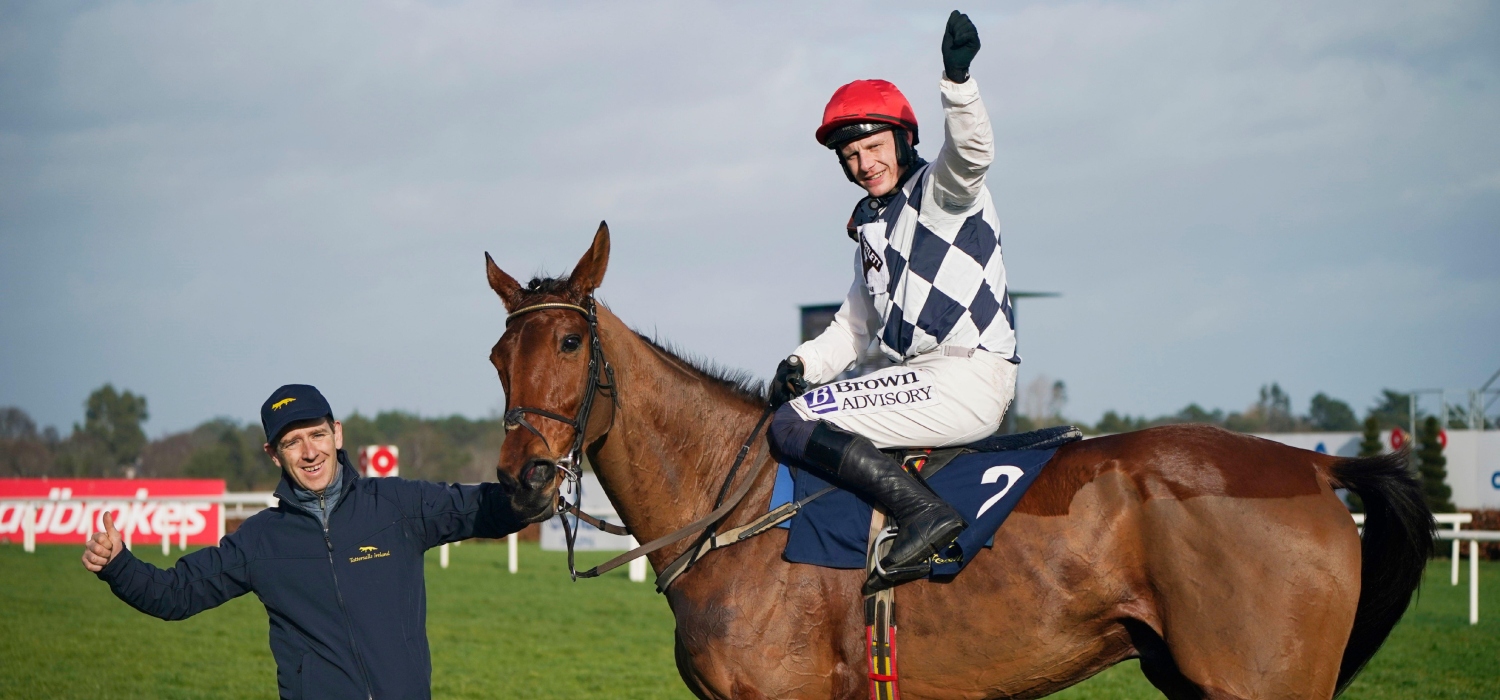
Cheltenham Trends analyst Matt Tombs is back with his last article of 2024, covering a wide range of topics.
For the last of these 5 articles on the Festival, I want to touch on some themes that I hope will be useful punting pointers but which didn’t require enough detail to be the sole topic for an article.
The Matchbook Cheltenham Handicaps Preview is live tomorrow night, 7.15pm 🎥
– Tom Stanley (Racing TV)
– Donn McClean (Racing TV)
– Matt Tombs (Trend Analyst)
– Micheál Deasy (Handicaps Analyst)
– Dan Overall (The Jumps Show)
– Declan Rix (At The Races)https://t.co/VSBfDL6XmV pic.twitter.com/7d5ufGYLzM— Matchbook Betting Exchange (@TeamMatchbook) March 5, 2024
The first is about horses from the same trial running in different Festival races.
One way punters try and exploit a view that a trial is red-hot form is via related contingency accumulators, usually doubles. Since the Dublin Racing Festival there’s been much chat about the Ballyburn (Supreme) / Slade Steel (Baring Bingham) double. The principle is sound. Both horses are priced up in good part on the basis of that form. It’s perceived as strong but an element of both horses’ prices is that it’s not yet proven quite how strong it is.
If you think that form is even stronger than the market consensus, by doing the double, you’re effectively getting the value for the same opinion twice, (if it turns out you’re correct). The novice hurdle division is an obvious place to look for such related contingency accas because we know less about those horses.
However, often the beaten horses included in these accas aren’t, by Grade 1 standards, that good. There are 4 2m Grade 1 novice hurdles before the Festival. The Royal Bond, Formby (formerly the Tolworth), Future Champions and Brave Inca at the Dublin Racing Festival. This century those races have produced 25 winners of the Supreme (17) and Baring Bingham (8).
Only once have any of them produced both winners in the same season – when Hardy Eustace followed up his Royal Bond win in the Baring Bingham and the 2nd at Fairyhouse Back In Front won the Supreme. The chance of a single piece of form being that far in front of the other major form-lines is small.
As well as making such judgments before the Festival, plenty of value can be had by being quick off the mark during Festival week as the different form lines get proven. There is so much going on that markets take a while to react.
For example, at the 2021 Festival, the 2m2f mares handicap hurdle at the Dublin Racing Festival produced 3 winners; winner Heaven Help Us following up in the Coral Cup, Mrs Milner winning the Pertemps having fallen at Leopardstown and 3rd Telmesomethinggirl winning the Dawn Run.
Telmesomethinggirl was 21.0 at the start of Festival week, 11.0 in the Pricewise grid and won the Dawn Run at 6.0.
Keeping an eye on how form lines are working out is one of the big challenges during the mayhem of Festival week. It’s tempting after racing to turn straight to the puzzles of the next day. However, a few minutes going through the races the winners, (and disappointing short priced horses,) had run in earlier in the season – can pay huge dividends.

Secondly, whilst each renewal needs looking at on it’s own merits it is important to keep in mind the inherent predictability (or lack of it) of each race. I touched on this for the 9 handicaps recently [LINK] but it’s equally important for the conditions races.
There are lots of different ways you could measure how predictable a race is. The winning SP is obviously important but so is how competitive the market is. If a race is won by a 5.0 favourite that was a more predictable race than one where a 5.0 shot turns over a 1.5 favourite.
I’ve therefore taken into account the position in the SP market of the winner too. By multiplying the SP of the winner and their position in the SP market you get a number. I’ve then taken the average of those numbers for each conditions race this century, (with a few tweaks set out below).
The smaller the number, the more predictable the race – as shown in the grid below.
- Mares Chase 4
- Cross Country * 13
- Champion Chase 15
- Gold Cup 20
- Ryanair 21
- Turners 21
- Mares Hurdle 25
- Baring Bingham 26
- Arkle 30
- National Hunt Chase * 37
- Champion Hurdle 43
- Triumph ** 48
- Stayers Hurdle 56
- Broadway 56
- Supreme 66
- Bumper 111
- Dawn Run 114
- Albert Bartlett 157
- Hunter Chase 196
* Only the level-weights renewals included, (Cross Country 2016 onwards and National Hunt Chase 2010 onwards.)
** Only renewals since the introduction of the Fred Winter included, (2005 onwards).
The actual numbers themselves aren’t important – it’s how they compare to the numbers for the other races.
We’ve only had 3 renewals of the Mares Chase but there are races like the Cross Country and Champion Chase that are inherently predictable. Those 2 races are arguably the most specialist at the Festival. There usually isn’t much depth and the front of the market dominates.
The Cross Country track is unique, (it is not even that similar to banks courses at e.g. Punchestown, as it had to be shoe-horned into the middle of the conventional tracks and there are few opportunities to gallop until the business end.)
Since Gordon Elliott in particular started aiming Grade 1 horses at this, few of their opponents have any sort of realistic chance despite there typically being close to a full field of 16. In the last 5 renewals the first 2 in the market have been the first 2 home. If you’d backed the first 2 in the market at SP in the 8 level-weights renewals you’d have made a 40% profit.
Similarly if you’d backed the first 2 in the SP market in the Champion Chase this century you’d have made a 27% profit. If you’re prepared to bet at short odds these races can be profitable to bet on.
By contrast there are conditions races that are really unpredictable. The Hunter Chase is a race where most punters know little of the form beyond the front of the market. The market is often not efficiently sorting the 17.0 shots from the 67.0 chances. If you can make a case for a long shot don’t be put off because it’s a huge price.
The Albert Bartlett usually attracts close to a full field of 20, few if any of which have contested a truly run 3m hurdle. The difference between the challenge in the trials and the Festival race is greater than in almost all the other conditions events – and often suits very different horses. 9 of the last 10 winners have gone off 12.0 or bigger and from outside the first 5 in the market. I’d be cautious about taking a shortish price in the Albert Bartlett.
When you start analysing a renewal of a Festival race to try to work out what chance each horse has, it’s important to have in your mind how inherently predictable that race is.

Thirdly, Willie Mullins and the mares’ races – where I think many punters are slightly stuck in the past. There remains an assumption for many that Willie is just going to win all 3 mares races – which has been fuelled by the general debate about increasing Mullins dominance this season, especially at the Dublin Racing Festival.
I think that’s lazy thinking. The actual trend we need to be looking at is the breakdown of Mullins dominance in the mares’ races at the Festival. In terms of Willie winning or losing those 3 races, that trend is (most recent renewals last):
- Mares Hurdle: LWWWWWWWWLWLLLLL
- Dawn Run: WWWWWLLL
- Mares Chase: WWL
The early renewals of each of the 3 races were marked by almost complete Mullins dominance.
As the races, (and the wider programme for mares,) bed down, they get more competitive as other trainers start to bridge the gap.
That’s not for a moment to suggest that the gap will disappear. Willie is going to remain the leader in the mares divisions for a while yet.
However, the results are showing that other trainers are catching up – but the markets are still priced as if Willie was winning almost every renewal of these 3 races.
I think there’s value against the Mullins battalions, especially in the more established races – the Mares Hurdle in particular. Willie has saddled 4 beaten favourites in the last 5 Mares Hurdles, 3 of which went off odds-on.
If this were run over 2m Lossiemouth being 1.67 might be justified but it’s over 2m4f and she looks a favourite to take on. It’s about 13.0 bar the Mullins runners at the moment. If you’re a punter wanting to back long shots in the Grade 1s, looking at mares from other yards in the Mares Hurdle could be one of your better sources of value.

Finally – odds-on shots more generally. At the time of writing there are 5 races with odds-on shots in the ante-post markets:
- State Man (Champion Hurdle)
- Lossiemouth (Mares Hurdle)
- Fact To File (Broadway)
- El Fabiolo (Champion Chase)
- Sir Gino (Triumph)
In addition I could see 3 others going off odds-on:
- Ballyburn (Supreme or Baring Bingham)
- Dinoblue (Mares Chase)
- Galopin Des Champs (Gold Cup)
Between 1990 and 2007 there were only 9 odds-on shots at the Festival. In the last 15 years the number of odds-on shots has been (most recent last): 342431343626753.
The Festival is much less competitive now, so working out how to punt in races with odds-on shots has become a core skill for betting at the Festival. So, looking at the 67 odds-on shots since 1990 – are there certain types of odds-on shots that we should be backing or laying?
The short answer is no! Whether you divide those 67 by race type, distance, ground or trainer there are very few patterns. I’d thought that races at 2m might be better in terms of producing bankers – but they haven’t been.
It was striking how just about every category produced results that were pretty neutral. Sometimes trends just can’t help and you have to rely wholly on evaluating the races…
Watch Our Cheltenham Preview Night:
Subscribe to the Matchbook Betting Podcast here
Subscribe to the Matchbook YouTube channel here







